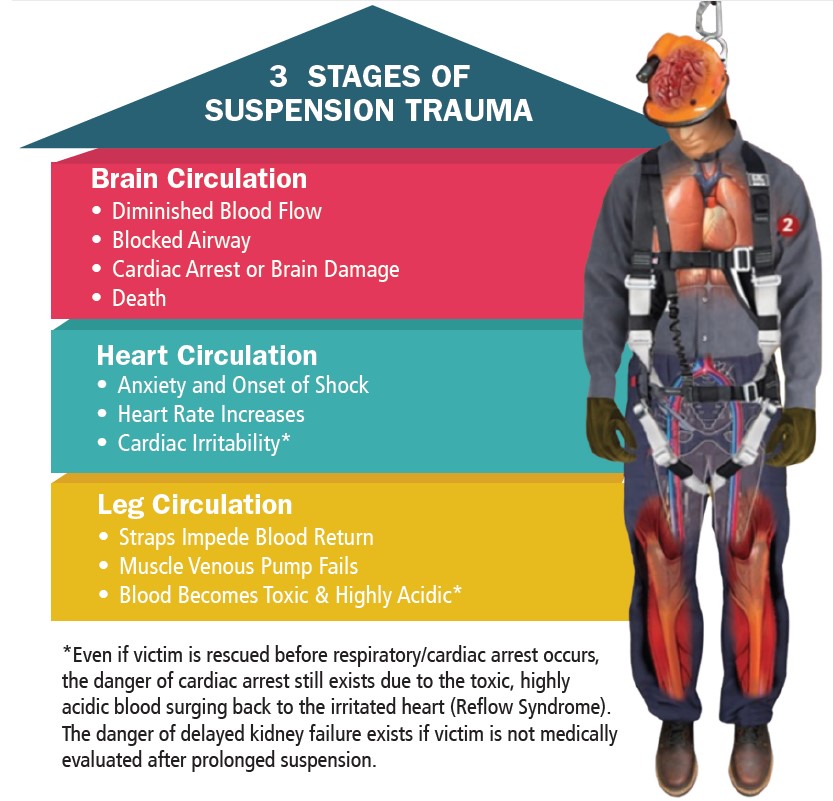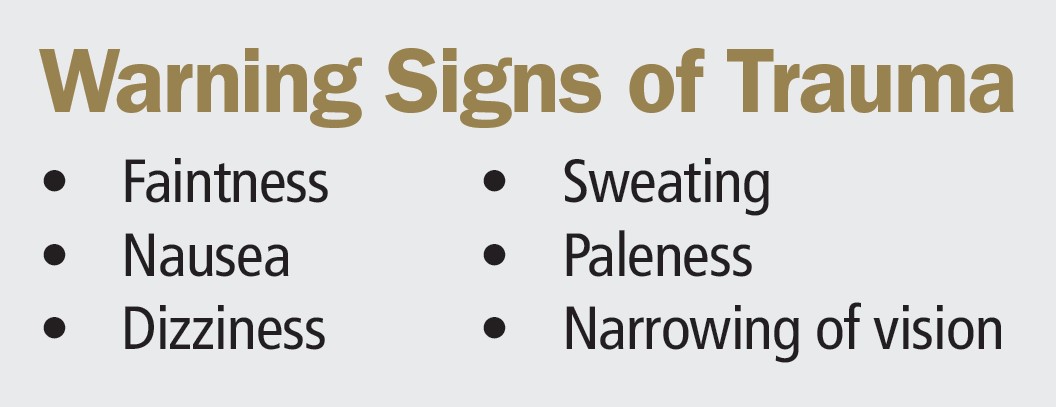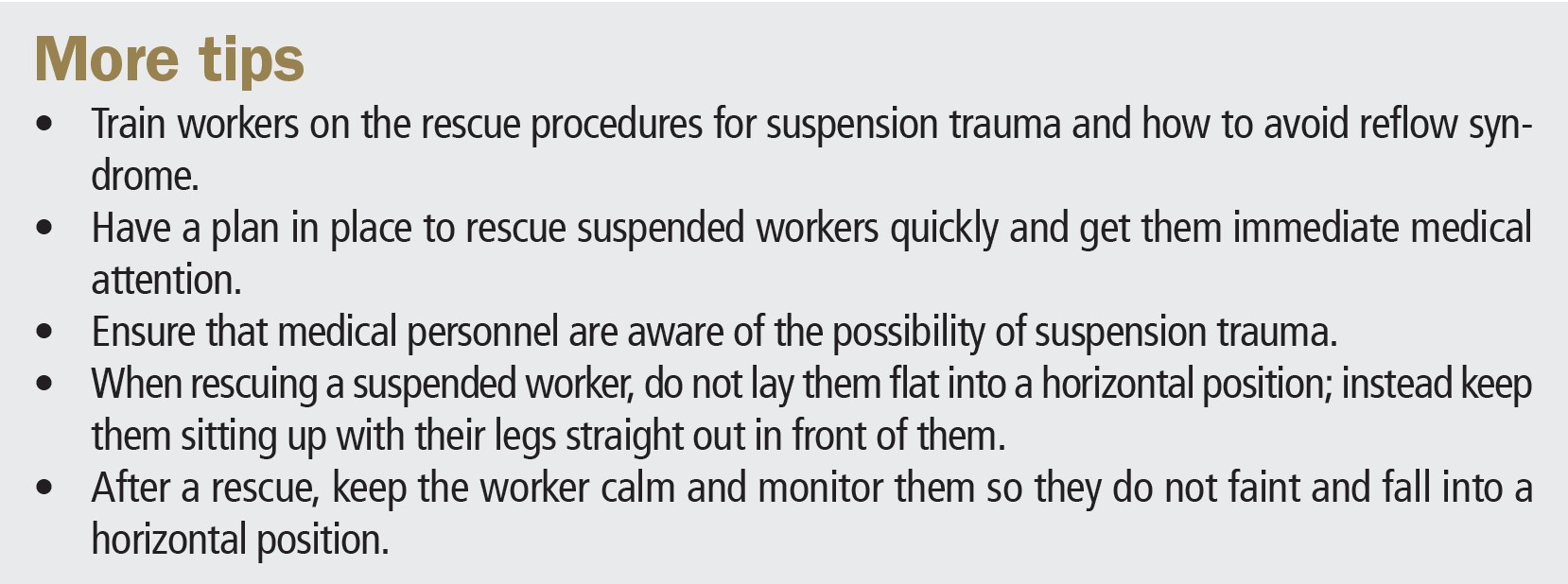April 2023 – Workplace Safety – Construction Falls and the Perils of Suspension Trauma

ONE OF THE most common construction industry accidents is falls from heights, which is why it’s crucial that you have in place fall protection systems for your workers.
One of the best ways to prevent injuries and death from falls is by using a fall-arrest system. But while these systems can save lives, they can cause suspension trauma if the worker is not rescued and brought to ground level as soon as possible and is instead left suspended in an upright position, with their legs dangling.
Because the worker is suspended in an upright position with their legs hanging, blood begins to accumulate in the legs.
This is commonly called venous pooling (the accumulation of too much blood in the veins), which reduces the flow of oxygenated blood to the heart and brain.
Remaining in this position for a long time can cause the worker to pass out and the longer they hang in place, the more it can result in serious health problems – and even death.

How to avoid suspension trauma Safe, prompt rescue is the key to preventing suspension trauma. The sooner a worker can be rescued, the less likely they are to endure such trauma.
During the rescue, care should be taken to slowly put the victim back on the ground. Try to avoid suddenly letting them into a horizontal position, which can cause deoxygenated blood to flow back into the body (reflow syndrome) and cause damage to the brain and other organs – and even cause the heart to stop.
Suspended workers awaiting rescue can take some action to guard against injury, including:
- Adopting a sitting position, if possible.
- Moving into a horizontal position as much as possible.
- Using their legs to push off from a hard surface, keeping the muscles active.
- Pumping legs frequently to maintain blood flow and prevent venous pooling.
One of the primary ways to slow the progression of suspension trauma is to stand up. When standing, the leg muscles must contract to provide support and maintain balance and these actions also put pressure on the veins. This pressure, along with a series of one-way valves in the veins, helps blood get to the heart and reduces the amount of blood pooling in the legs.
Workers can “stand” by using the trauma-relief straps that are attached in pouches on the side of the fall-arrest harness. When suspended, the worker can deploy the trauma-relief straps, which provide a loop that they can put their feet into and press against to simulate standing up.



